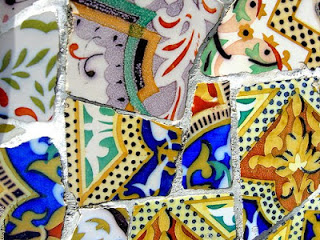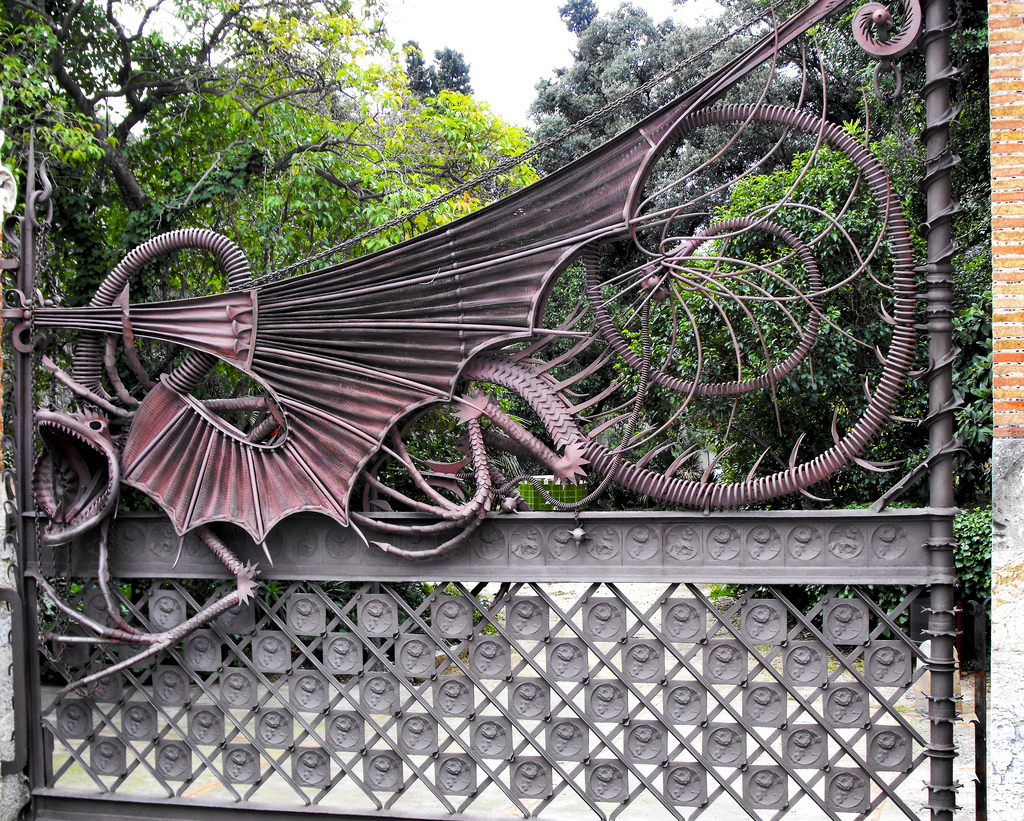One of the highlights of a trip to Barcelona is the collection of Romanesque art in the Museu Nacional d'Art de Catalunya (MNAC) - fittingly, you climb up to Montjuic mountain and enter the impressive, domed Palau Nacional, with its frescoes, huge spaces and wonderful diverse collections of Cataluna's art.
The Romanesque collection of art, however, is reputedly the best in the world assembled in one place, and it is astounding in its breadth and depth, its presentation and its relevance to all the other art that one can see in the same museum. It is a wonderful reminder of how the 10th-13th century world in Spain was so closely linked with that of France, Italy and Northern Europe. As a young woman, I used to travel from Paris to Barcelona by car, meandering through France to all the major Romanesque sites. This Barcelona collection is the perfect continuation of the wonders that one can see in France in the famed churches and chapels.
Taller of La Seu d'Urgeuell
Apse of Sant Climent de Tauli, c. 1123
Frescoes, tenderly rescued from chapels and churches all over Cataluna but mostly to the north, are beautifully mounted in domed reproductions of the churches, or incorporated into arches. The domes are created from wonderful wooden structures whose complex beauty and carpentry are works of art in themselves, seen from behind the display of each fresco. Colours are as vivid, in many cases, as if the frescoes were executed yesterday - their directness is arresting, details astonishing.
Detail of the Nativity scene from the front of the Avia Altar
Santa Julitta
Many of the frescoes are done in colours that seem so modern, as can be seen in the excellent presentation on the Museum website. In a way, this religious art is fun - it is imbued with religious fervour, yes, but also with a fresh reflection of life and the things that mattered to those contemporary worshippers. Details are wonderful and well worth looking at closely as you wander through the beautifully presented rooms (many redone in late 2011).
There were delicious cattle, cockerels, other beasties amid the details of everyday life. Many of them are the direct link to Antoni Gaudi, for instance, when you look at details of the Sagrada Familia sculptures. Then when you turn to the rooms of Romanesque sculptures at the Museum, the simplicity and power of the wooden or metal crucifixes were memorable and haunting, especially as they are superbly presented and lit.
This small and gauntly exquisite Christ is from Serdanya in Cataluna (image at right).
This wonderful polychrome crucifix is the Batllo mid-12th century Crucifix.
In similar fashion, the fabulously simple, wooden figures, arrestingly displayed, are very powerful. Some are almost Oriental in the serenity of their faces and expressions, their surfaces beautifully worked and smooth.
Figures from the church of Santa Eulàliain Erill la Vall (Boí Valley, Alta Ribagorça)
As a counterpoint to all the polychromed frescoes, there are rooms of carved capitals on pillars from cloisters and churches, the stone wonderfully worked with saints, plants, fanciful beasties... and in the final room, there was a selection of enamelled religious objects, many in champleve, many from Limoges. Again, the reminder of how close were the religious communities of France and Spain.
Anyone with an hour or more to spare in Barcelona should do themselves a favour and see this remarkable collection of Romanesque art - it takes one into a world of powerful, direct emotions - joys, sorrows, deep beliefs and hopes, seasoned with humour and respect for life and nature.















